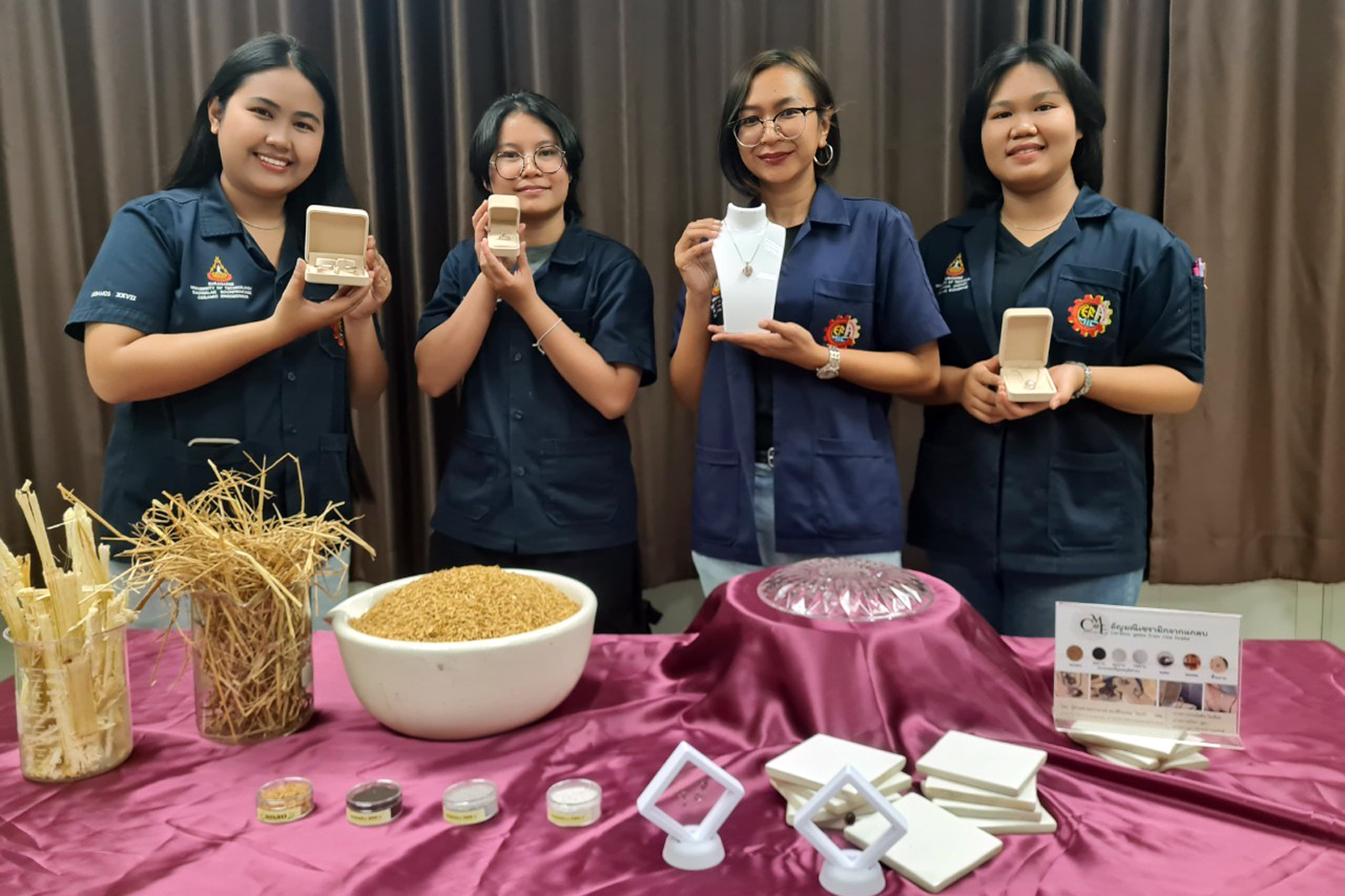Suranari University of Technology Innovates with Agricultural Byproducts
Researchers at Suranari University of Technology (SUT) have made a groundbreaking advancement by creating ceramic gemstones from agricultural waste, significantly increasing the value of these materials. The innovative project has resulted in gemstones priced 6,000 times higher than the original agricultural waste used in their production.
Inspiration Behind the Research
Utilizing Thailand’s Agricultural Resources
The research team, consisting of senior students from the Institute of Engineering’s School of Ceramic Engineering—Parnpailin Jaichuei, Chatcha Chuma, and Saowalak Boonpakdi—was motivated by Thailand’s status as a major agricultural producer. With rice and sugarcane being key crops, the country generates substantial agricultural waste each year, including straw, husks, and bagasse.
Addressing Environmental Concerns
Ms. Saowalak highlighted that much of this waste is often underutilized and either turned into fertilizer or burned, contributing to air pollution. This environmental concern prompted the team to explore how these byproducts could be repurposed effectively.
The Process of Creating Ceramic Gemstones
Analyzing Agricultural Waste
The research began with an analysis of the properties of agricultural waste, revealing high silica content in materials like rice husks. Since silica is a primary component in natural gemstones, the team decided to develop a method for transforming these wastes into valuable ceramic gemstones.
Innovative Production Techniques
The production process involves several steps:
- Calcination: The agricultural waste is subjected to calcination at temperatures of 300°C, 500°C, and 700°C, converting it into high-quality ash.
- Mixing and Liquefaction: This ash is then mixed with additives using ceramic engineering techniques and liquefied at 1,300°C to form molten glass.
- Cooling and Solidification: After cooling, the material is reheated in a ceramic oven at 550°C for enhanced durability before slowly cooling again for stability.
Characteristics and Applications of the Gemstones
Durability and Aesthetic Appeal
The resulting ceramic gemstones not only mirror the colors of their original materials but also possess durability comparable to natural gemstones. Their size and strength make them suitable for various industrial applications.
Economic Benefits
By transforming low-cost agricultural waste (valued at around four baht per kilogram) into high-value gemstones (totaling approximately 24,000 baht for 20 pieces), this innovation adds significant economic value to what was previously considered waste.
A Sustainable Future with Innovative Solutions
The creation of ceramic gemstones from agricultural waste by SUT researchers exemplifies how innovation can lead to sustainable practices while addressing environmental concerns. This project not only showcases Thailand’s potential for utilizing its agricultural resources but also highlights the importance of research in creating valuable solutions that benefit both the economy and the environment. As industries continue to seek sustainable alternatives, initiatives like this pave the way for a greener future.









